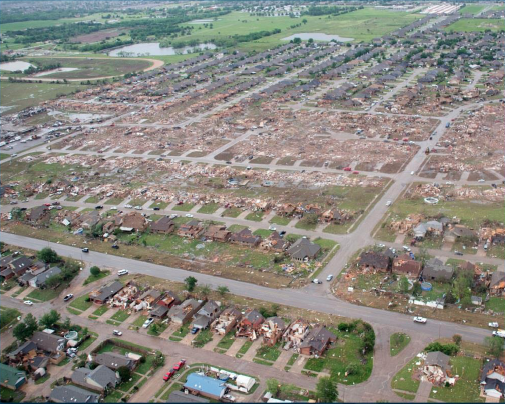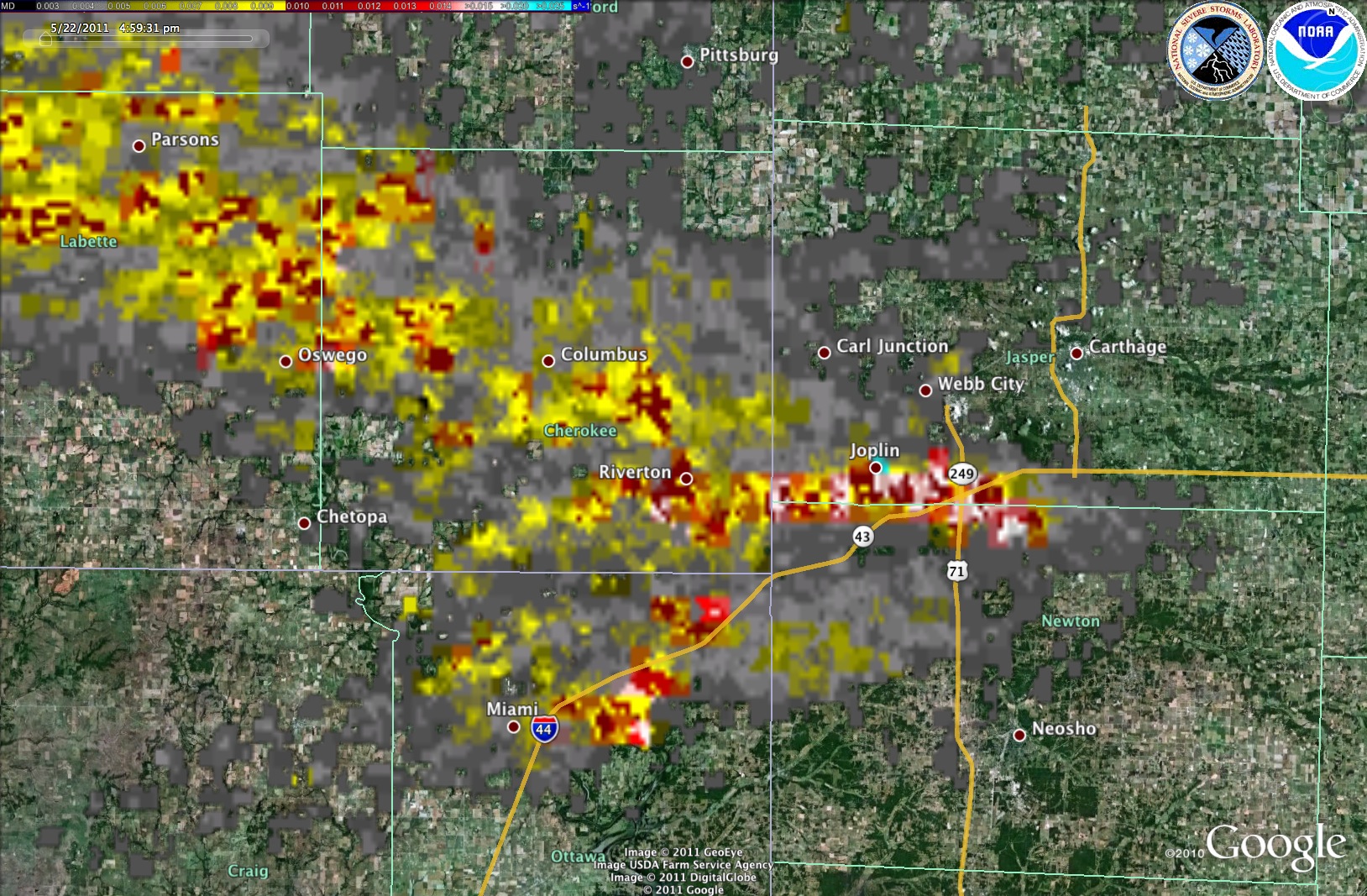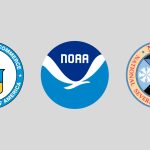 The September 2014 issue of Natural Hazards Observer features the findings of a National Institute of Standards and Technology (NIST) team, including NSSL’s Dave Jorgensen, that investigated the May 22, 2011 tornado in Joplin, Missouri. The study was the first comprehensive look at tornado impacts under the auspices of the National Construction Safety Team Act, a law giving NIST the same powers to investigate building collapses as at the NTSB has with aircraft accidents.
The September 2014 issue of Natural Hazards Observer features the findings of a National Institute of Standards and Technology (NIST) team, including NSSL’s Dave Jorgensen, that investigated the May 22, 2011 tornado in Joplin, Missouri. The study was the first comprehensive look at tornado impacts under the auspices of the National Construction Safety Team Act, a law giving NIST the same powers to investigate building collapses as at the NTSB has with aircraft accidents.
The article, “Lessons from the 2011 Joplin tornado,” highlighted the broad range of building systems affected by the tornado – and that the buildings did not protect the occupants. The team studied the impact of emergency communication by looking at tornado fatalities located outside of designated refuge areas, and noted the lack of awareness and perception there was personal risk. Another important finding was the majority of decision makers, who eventually decided protection was necessary, did so only after receiving intense cues from the environment.
The NIST report made 16 recommendations for improving how buildings and shelters are designed, constructed, and maintained in tornado-prone regions and for improving emergency communications. The key recommendations where implementation is likely to have the greatest impact on life safety in future disasters include:
1. Develop nationally accepted performance-based standards for tornado-resistant design of buildings and infrastructure, as well as design methods to achieve these standards.
2. Install tornado shelters in new and existing multi-family residential buildings, mercantile buildings, schools, and buildings with assembly occupancies located in tornado hazard areas.
3. Create national codes and standards and uniform guidance for clear, consistent, recognizable, and accurate emergency communications, encompassing alerts and warnings. This will enable safe, effective, and timely responses among individuals, organizations, and communities in the path of storms having the potential to form tornadoes.
This work supports NOAA’s Weather-Ready Nation Goal: “Society is prepared for and responds to weather-related events,” and the Weather-Ready Nation Objective: “Reduced loss of life, property, and disruption from high-impact events.”


